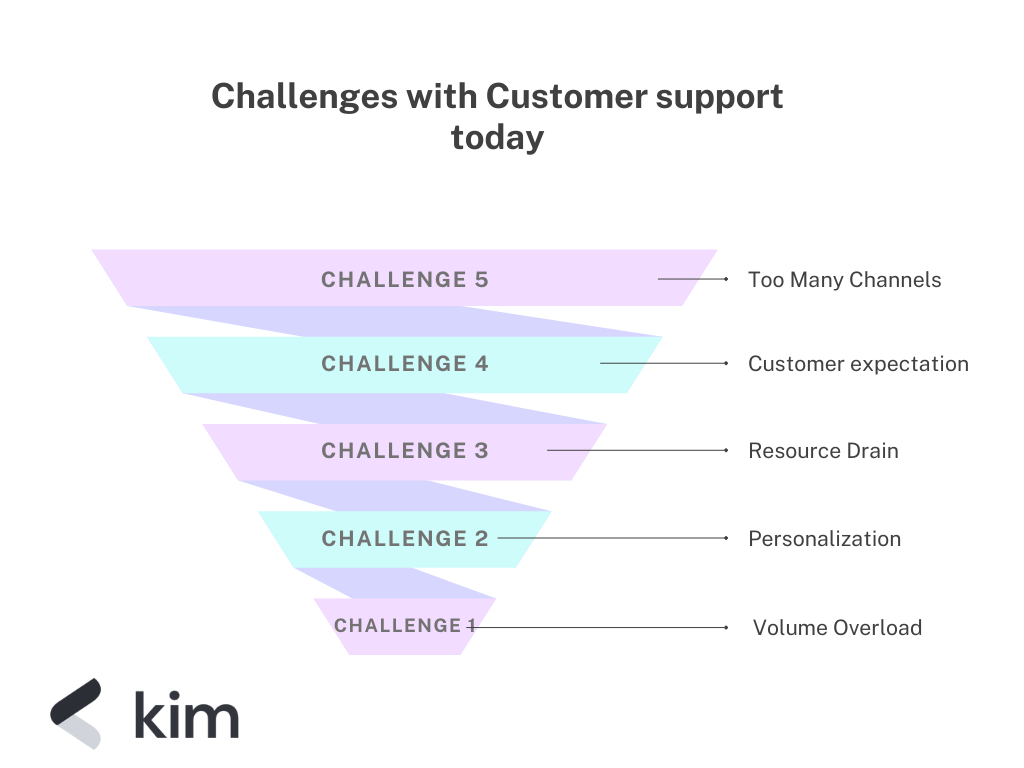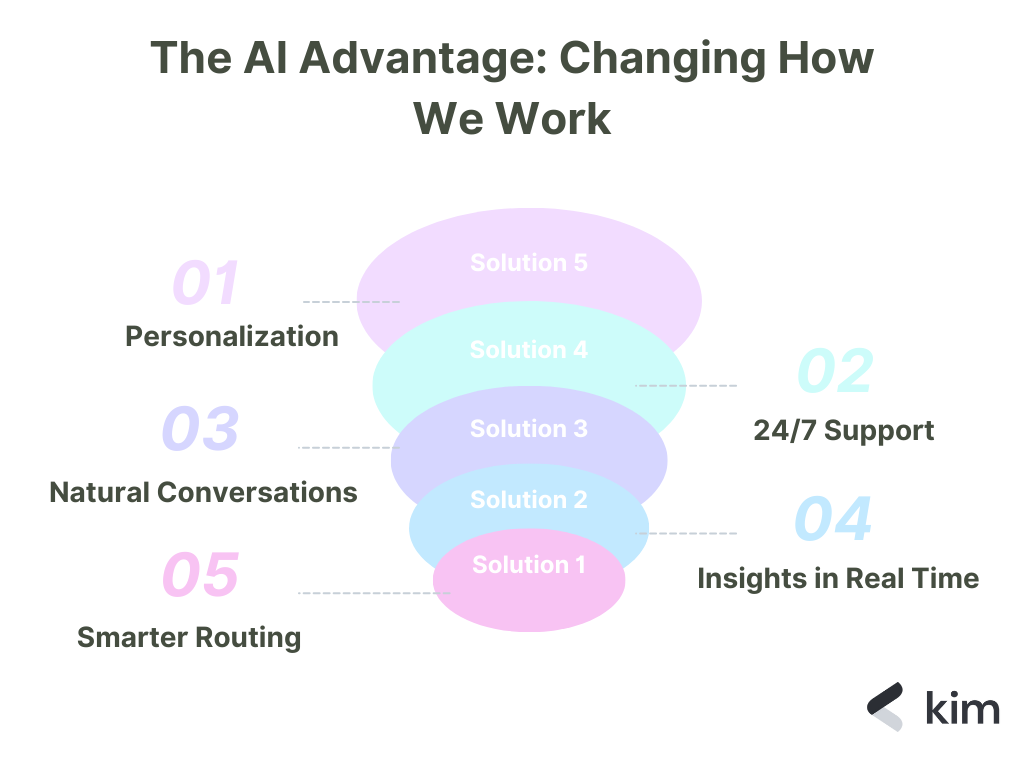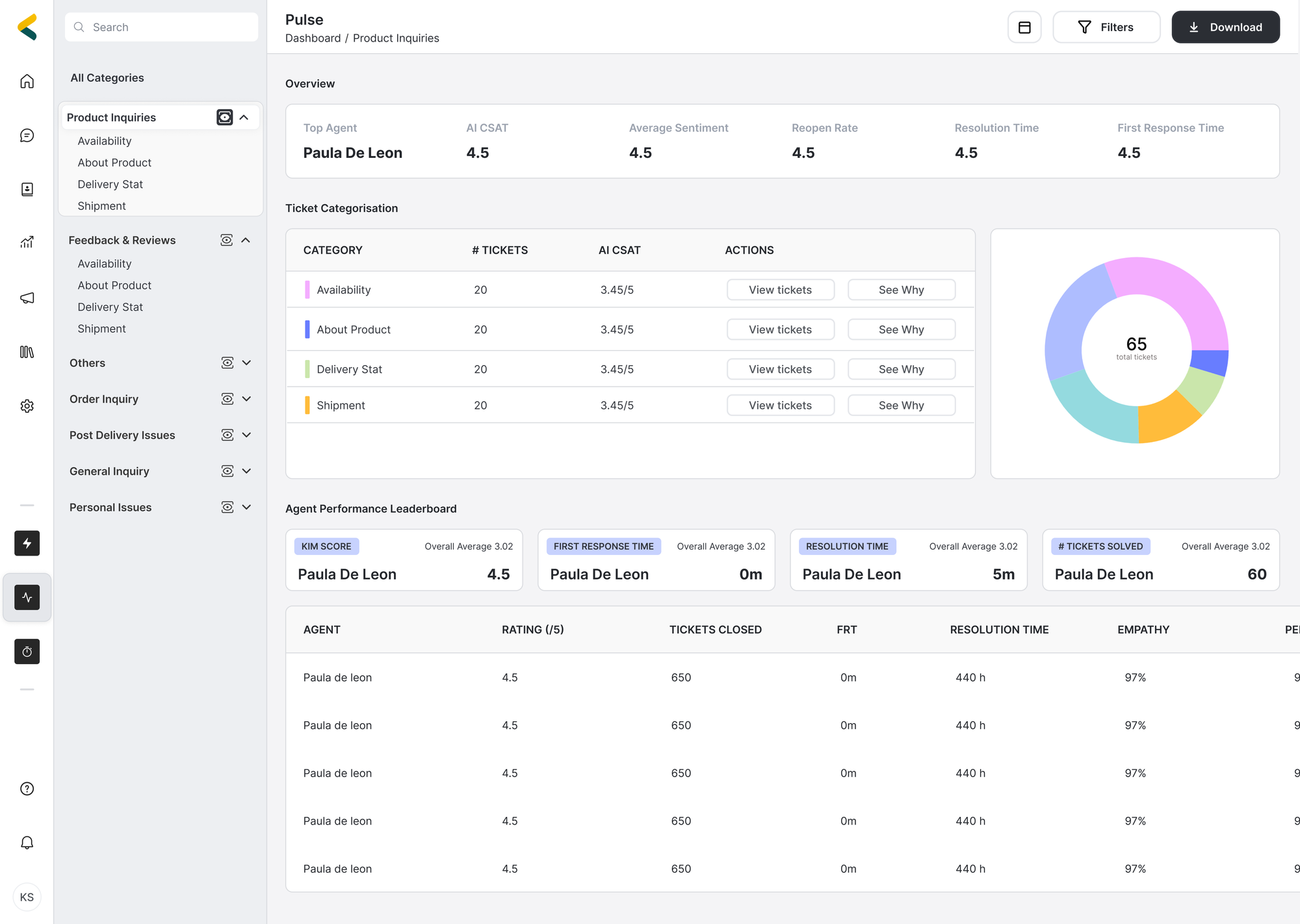Why AI in Customer Support Is the New Secret Weapon
If you’ve ever said, “Alexa, play some relaxing music,” and she instantly turned your living room into a spa… you already know how powerful AI can be. Sure, sometimes Alexa mishears and blasts heavy metal instead (been there), but most of the time, she nails it. And honestly? That’s exactly what’s happening in customer service right now.
AI isn’t some shiny new gadget on the horizon anymore, it’s already here, running the show behind the scenes. But here’s the fun twist: it’s not here to steal jobs. Nope. It’s more like that super-efficient intern who doesn’t need lunch breaks, coffee, or PTO. The only catch? Someone who knows how to use AI might just end up taking your job.

Still, a lot of brands treat AI like they treat treadmills. They buy it, set it up, use it enthusiastically for a week, and then… let it gather dust. Later, they complain: “It’s robotic. It makes mistakes. Customers hate it.” The truth? AI is like Alexa, it gets smarter the more you teach it. Train it right, and it can turn your customer service experience from “meh” to “wow” faster than you can say “live chat support outsourcing.”
So let’s talk about why customer service is such a beast to handle today, how AI makes it better, and why some of the best customer service moments you’ve had lately probably had a little AI magic behind them.
Why Customer Support Feels Like Chaos
Ask anyone who’s ever worked in customer service and they’ll tell you: it’s not the angry customers that break you, it’s the sheer volume of the same questions over and over. Let’s break down the biggest struggles.

1. Volume Overload
Black Friday. Cyber Monday. Christmas. Even Valentine’s Day if you’re in ecommerce. Those days turn your customer service inbox into something that looks like a teenager’s WhatsApp group, a nonstop flood of “Hey, where’s my order?”
Amazon, for example, shipped 2.5 billion packages during the 2020 holiday season. Can you imagine the ticket volume? Even with the best email support team, there’s just no way to keep up without customer service software or some kind of automation.
2. Personalization Is Hard
Let’s say a customer ordered perfume in 2019, emailed in 2021 about an allergy, and now in 2025 wants vegan alternatives. Do you think a customer service advisor can remember that history? Of course not. But AI customer service software can, it’ll pull it up in seconds, making the reply personal without anyone digging through old emails.
Sephora does this brilliantly. Their AI-powered virtual assistants recommend products based on skin tone, past purchases, and even beauty quizzes. That’s personalization on autopilot.
3. Resource Drain
Picture this: you have 15 agents. Half are resolving real issues, while the other half are copying and pasting the same line: “Your order is on the way.” over and over. Not exactly inspiring work, right? That’s why many companies look into customer care outsourcing or back office support. But without AI, it’s still a human doing repetitive tasks, and let’s be honest, no one likes answering the same question 50 times a day.
4. Customers Are Harder to Please
One bad review on Twitter, and suddenly your brand is in the news for all the wrong reasons. (Remember United Airlines’ infamous passenger incident? Yeah, that blew up fast.) Today’s customers expect fast replies, empathy, and accuracy. Good customer service isn’t just nice anymore, it’s survival.
Mess it up, and they’re gone, usually to a competitor who has figured out AI customer service software.
5. Too Many Channels, Too Little Time
Gone are the days when “info@brand.com” was enough. Now customers slide into your Instagram DMs, tweet at you, drop a Facebook comment, and then follow up on email. And you can’t just copy-paste the same reply everywhere. The tone on TikTok isn’t the same as on LinkedIn. That’s why more brands are turning to customer support ecommerce tools and live chat support outsourcing, it’s the only way to be everywhere without burning out.
How AI Flips the Script
Alright, enough doom and gloom. Let’s talk solutions. AI might not walk your dog or make your coffee (yet), but when it comes to customer service, it’s basically a superhero sidekick. Here’s how it changes everything.

1. Personalization That Actually Feels Personal
AI can look at your last 10 purchases, your complaints, and even your browsing history to craft a response that feels like it was written just for you. Bought size M last year? AI will remind you. Complained about late delivery? AI will preemptively offer faster shipping. That’s what good customer service looks like in 2025.
2. 24/7 Support (Because Customers Don’t Sleep)
You might be snuggled up in bed at 2 AM, but somewhere, a customer is panicking about whether their package will arrive tomorrow. And they want answers now.
Enter chatbots and virtual AI assistants. Take Best Buy customer service for example. If you Google “is Best Buy customer service 24/7?” you’ll see their agents have fixed hours, but their AI-powered chat is available around the clock. Customers get instant answers, and humans don’t have to sacrifice sleep. Win-win.
3. Natural Conversations, Not Robotic Scripts
Gone are the days when bots answered with stiff, weird lines like: “Your request is being processed. Thank you for your patience.” Today’s AI customer service agents use natural language processing (NLP) to sound, well, human. They can even detect when a customer is frustrated and adjust their tone.
For example, if someone angrily types “WHERE IS MY REFUND??” the AI won’t chirp back, “Great day to shop with us!” Instead, it’ll respond calmly and offer to escalate to a real customer service advisor. That’s the magic of AI-powered virtual assistants.
4. Insights in Real Time
Imagine being able to see, at a glance, what questions keep popping up, how fast your team is responding, and which agents are struggling. AI customer care software gives you that instantly.
Brands like Kim have features like Pulse that literally measure the “pulse” of every ticket, showing you trends in customer frustration or repetitive issues. That’s gold for improving both customer support and your actual products.

5. Smarter Routing
Sometimes, a query is too complex for AI. Maybe it’s a technical issue, or maybe the customer is a VIP. Instead of fumbling, AI customer service software can route it straight to the right human.
H&M, for example, uses automated routing to send high-priority ecommerce customer support issues directly to specialists. Customers feel valued, and agents don’t waste time transferring tickets back and forth.
AI + Humans = The Dream Team
Here’s the truth: AI on its own isn’t enough. No one likes being stuck in a chatbot loop with no way out. But humans on their own can’t keep up with the speed and volume of today’s customer service.
The sweet spot? A combo. AI handles the repetitive stuff, and humans step in for empathy, complex issues, and relationship-building. Domino’s Pizza does this really well. Their AI takes orders in seconds, but if you’ve got a complaint about a wrong topping, a human advisor will jump in.
That’s why top CX companies are investing not just in AI tools, but also in training their teams. When you hire customer support today, you’re not just hiring for people skills, you’re hiring for people who can work with AI. Remote teams, customer care outsourcing, back office support, they all become 10x more effective when paired with AI.
Why AI-Free Customer Service Feels Outdated
Let’s play a quick game.
Scenario A: You email Brand X about your delayed package. Three days later, you get a generic copy-paste: “Sorry for the inconvenience. Your order is on the way.”
Scenario B: You message Brand Y’s chat desk. Within 15 seconds, their AI checks your history, notices your last two orders were also late, and immediately offers you a $10 credit plus faster shipping.
Which one feels like the best customer experience? Exactly. The difference is the right mix of customer service software, best chat support, and best email support, all powered by AI.
So, What Should Brands Do?
Here’s the playbook if you’re serious about leveling up your customer service experience:
- Train your AI. Don’t just “plug and play.” Teach it your policies, FAQs, and tone.
- Go omnichannel. Customers will reach out on Instagram, TikTok, email, and live chat. Be ready.
- Use outsourcing smartly. Live chat support outsourcing or back office support is great, but make sure it’s paired with AI for speed.
- Hire smarter. When you hire customer support, look for people who can work with virtual AI assistants, not against them.
- Keep learning. AI isn’t “set it and forget it.” It’s “train, improve, repeat.”
And if you’re hunting for practical steps, we’ve got another guide on the top 10 customer service tips you can check out.
Final Thoughts
So here’s the takeaway: AI isn’t the scary robot people think it is. It’s not here to fire customer service advisors, it’s here to make their jobs easier. The brands delivering the best customer service today aren’t the ones with the flashiest tools. They’re the ones that use AI wisely and keep the human touch alive.
Next time Alexa reminds you to reorder detergent, or Best Buy customer service helps you at 2 AM, remember: AI isn’t the enemy. It’s the sidekick. And in today’s world, customer service without AI feels like trying to binge Netflix on dial-up internet. Possible? Maybe. Fun? Not even close.
The future belongs to the brands that get this balance right. And those brands? They’ll deliver the kind of good customer service customers rave about, stick with, and share on social media.
Because at the end of the day, that’s all customers want: answers that are fast, personal, and human, even if an AI-powered virtual assistant did most of the heavy lifting behind the scenes.
Ready to level up your customer service with AI?